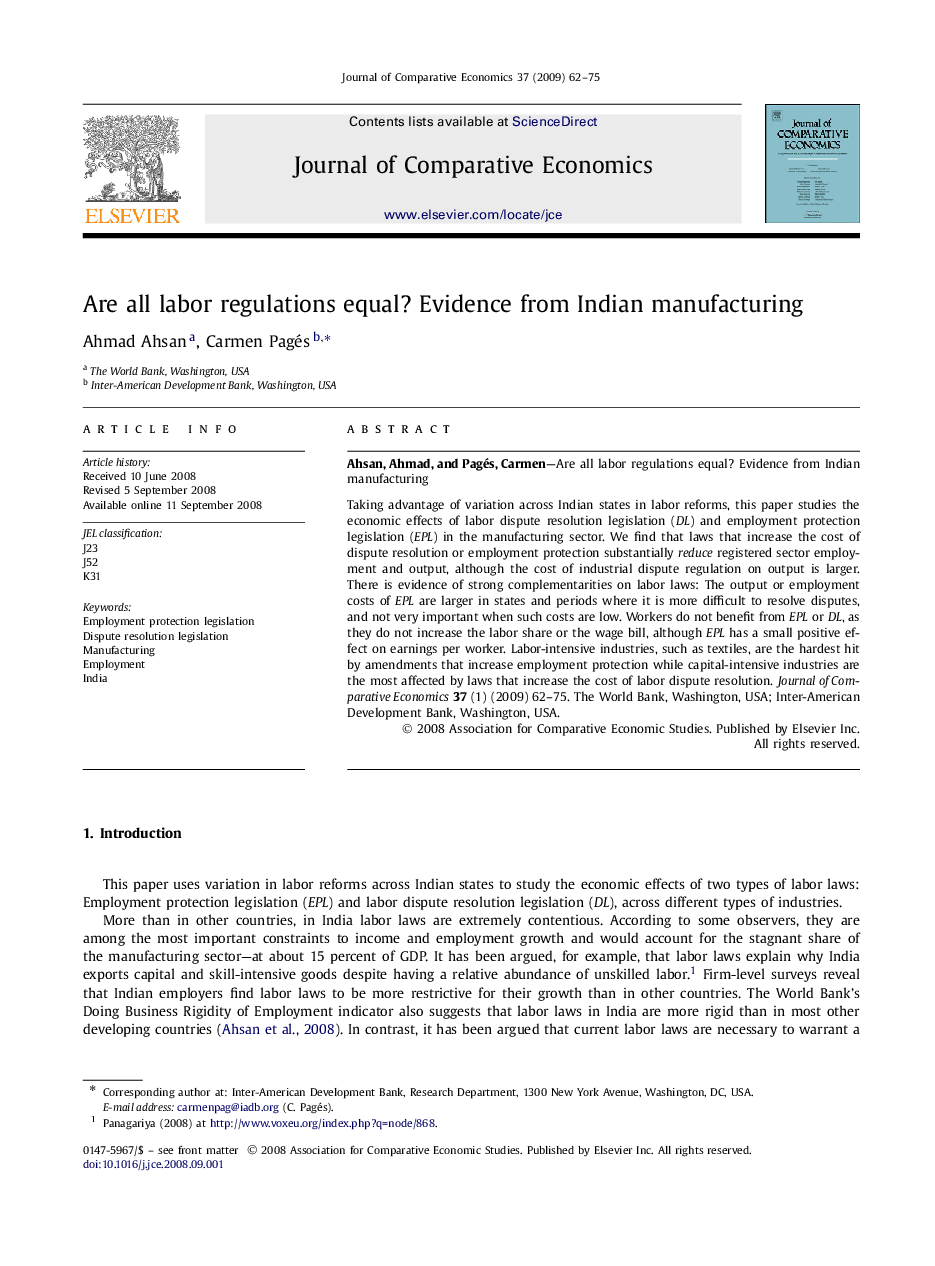| Article ID | Journal | Published Year | Pages | File Type |
|---|---|---|---|---|
| 5092683 | Journal of Comparative Economics | 2009 | 14 Pages |
Abstract
Taking advantage of variation across Indian states in labor reforms, this paper studies the economic effects of labor dispute resolution legislation (DL) and employment protection legislation (EPL) in the manufacturing sector. We find that laws that increase the cost of dispute resolution or employment protection substantially reduce registered sector employment and output, although the cost of industrial dispute regulation on output is larger. There is evidence of strong complementarities on labor laws: The output or employment costs of EPL are larger in states and periods where it is more difficult to resolve disputes, and not very important when such costs are low. Workers do not benefit from EPL or DL, as they do not increase the labor share or the wage bill, although EPL has a small positive effect on earnings per worker. Labor-intensive industries, such as textiles, are the hardest hit by amendments that increase employment protection while capital-intensive industries are the most affected by laws that increase the cost of labor dispute resolution. Journal of Comparative Economics37 (1) (2009) 62-75.
Related Topics
Social Sciences and Humanities
Economics, Econometrics and Finance
Economics and Econometrics
Authors
Ahmad Ahsan, Carmen Pagés,
